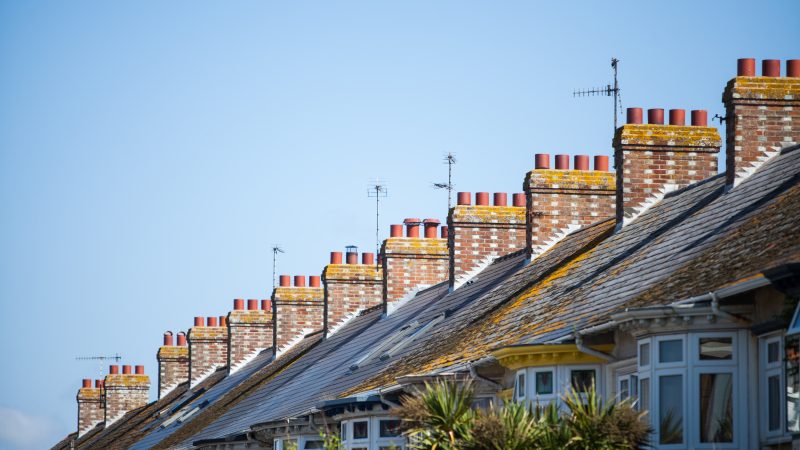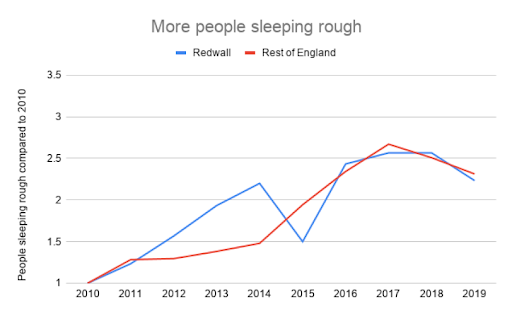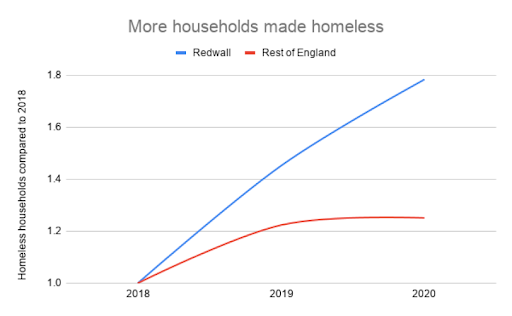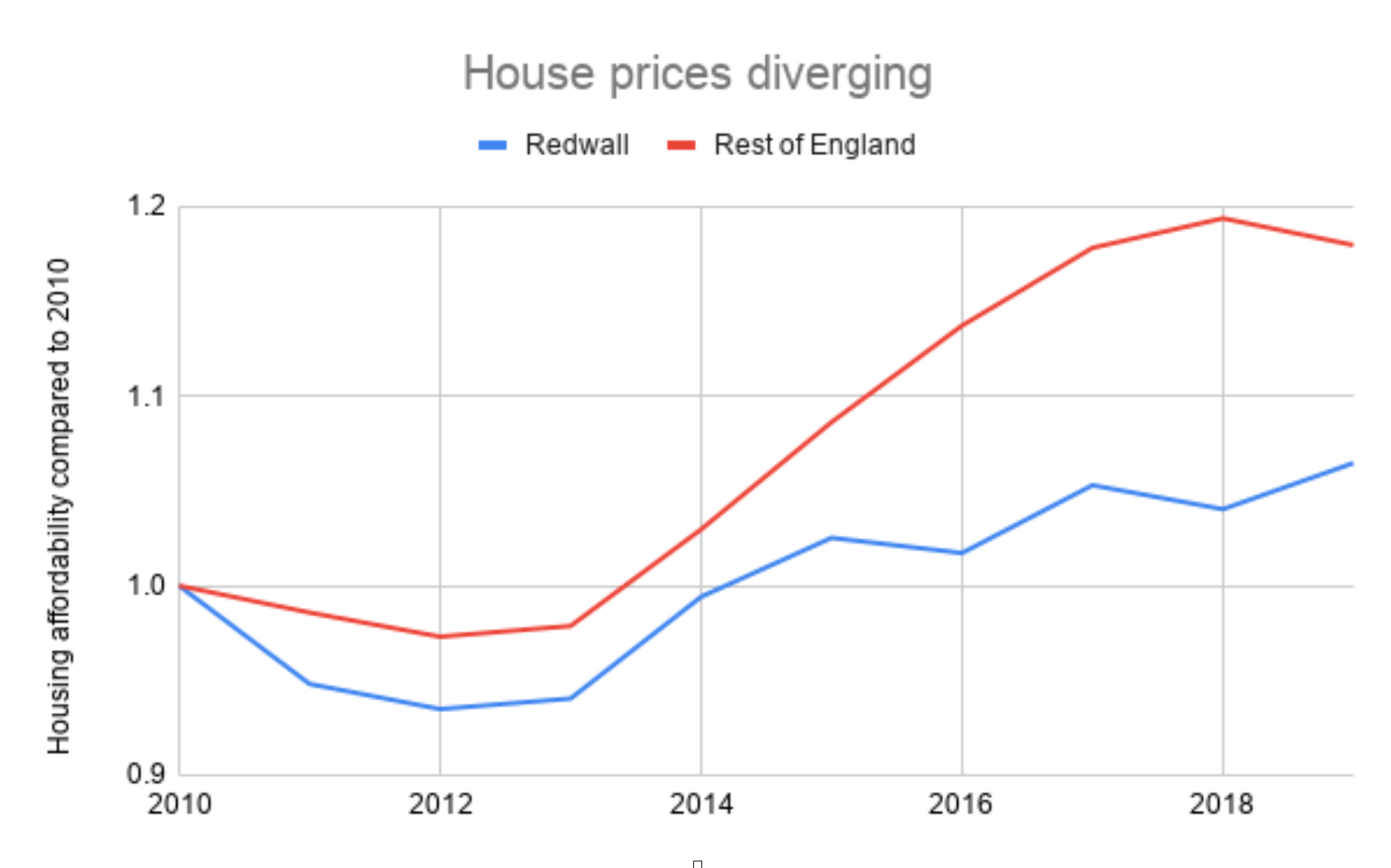
There are two unassailable truths to those that advise Labour on winning the next election: it must win back voters in the ‘Red Wall’, many of whom feel ‘left behind’, and it must also help first-time buyers. Detailed analysis shows that these two priorities may be contradictory.
Labour’s reputation as a party committed to ending homelessness is likely to be as popular in the Red Wall seats as elsewhere in England, but focusing on helping first-time buyers risks alienating older voters in Red Wall seats, many of whom have not benefited from the rising house prices of recent years. While housing is unlikely to be the decisive factor in an upcoming election campaign, Labour must ensure that the issue is an overall vote winner and one that helps expand their support.
To reach these conclusions, I looked at the housing conditions in a number of Red Wall seats – Bassetlaw, Rochdale, Doncaster, Dudley, Wigan and Wakefield – to create a Red Wall composite housing index that can be compared with the rest of England, minus London. This shows that homelessness has increased in the Red Wall seats and house prices have not kept pace with national trends.
Red Wall seats have seen a rise in rough sleeping and other forms of homelessness similar to the rest of England

Prior to the pandemic, all areas of England had seen a dramatic increase in the number of people sleeping rough. This was as true in the Red Walls seats as elsewhere. The absolute number of people sleeping on the streets remains low but the increase has been dramatic. For example, the annual rough sleeping snapshot data shows that Bassetlaw reported one person sleeping rough in 2010 and 13 in 2019. This is a very visible sign of government failure, and one that should be to Labour’s advantage.

The past couple of years have seen a worrying increase in the number of households in England that have been made homeless. The situation appears to be even worse in Red Wall seats where, in just two years, there has been a circa 80% increase in the number of households made homeless.
Labour has an excellent track record on reducing the number of people sleeping rough and made impressive strides in this area between 1997 and 2010, nearly eliminating the problem. The government’s efforts to eradicate rough sleeping during the pandemic show that the state can quickly solve this issue with sufficient resources and attention.
Labour has a great opportunity to press the case that it is the best-placed party to end rough sleeping, an issue that is as relevant to people in the Red Wall as elsewhere.
House prices have not risen as fast in Red Wall seats as they have in the rest of England
For the past ten years, homeowners have seen the value of their homes increase, but that increase has been less dramatic in Red Wall seats than in the rest of England. This is a challenge for Labour, which will by default campaign to help first-time buyers get on the housing ladder.

Compared to homeowners in the rest of England, who have seen dramatic house price growth, older homeowners in Red Wall seats are likely to feel that they have been ‘left behind’. How will they respond to a housing policy message about making housing more affordable? Are they likely to be sympathetic because it will help their grandchildren to buy their first homes, or hostile as it will reduce the value of their one sizeable asset?
This is a real challenge for Labour, and solving it requires more than housing policy. Pledges to help first-time buyers need to be linked with strong messages on regional economic development and arrangements to share fairly the proceeds of the country’s growth – for example, IPPR has presented ideas for a Citizens’ Wealth Fund. To put it another way, to get a hearing on helping first-time buyers, Labour needs a convincing response to the ‘levelling-up’ agenda.




More from LabourList
LabourList Christmas quiz 2025 round 5: factions and unions picture round
LabourList Christmas quiz 2025 round 4: Christmas Connects
EXCLUSIVE: A Christmas message from Hollie Ridley